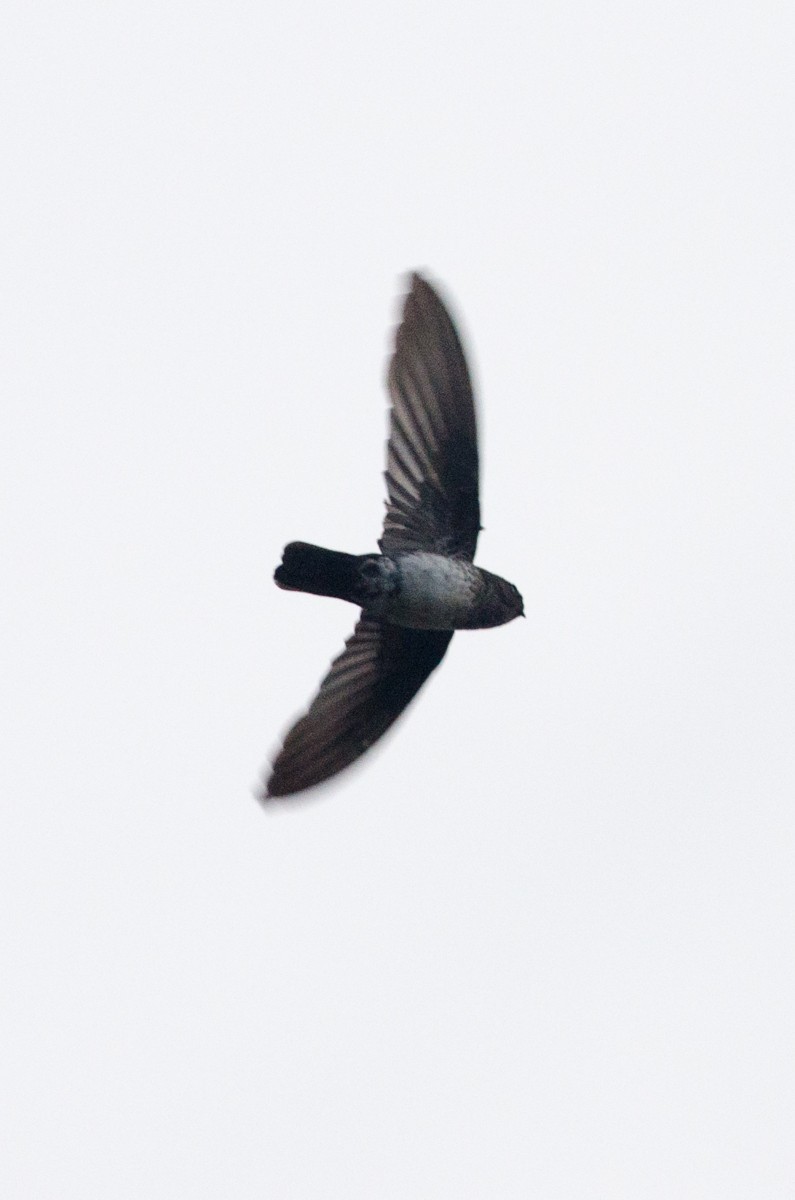Cave Swiftlet
A species of Glossy Swiftlets and Allies Scientific name : Collocalia linchi Genus : Glossy Swiftlets and Allies
Cave Swiftlet, A species of Glossy Swiftlets and Allies
Botanical name: Collocalia linchi
Genus: Glossy Swiftlets and Allies
Content
Description General Info
 Photo By Nikolaj Mølgaard Thomsen
Photo By Nikolaj Mølgaard Thomsen Description
This bird is shiny blackish-brown above with a greenish gloss, including its rump; sometimes looks black and hooded. Chest black; belly to flanks pale grey with fine black speckles at margins. Wing tips are rounded; underwing is black. Tail black, rounded with shallow notch but lacking the white specks found in the very similar glossy swiftlet (Collocalia esculenta). A distinguishing feature between the two species is that the glossy swiftlet has a tuft of feathers on its hind toe but the cave swiftlet has a naked toe. It is 9 to 11.5 cm (3.5 to 4.5 in) in length. The call is a high-pitched "cheer-cheer". 
Size
10 cm
Nest Placement
Cavity
Feeding Habits
Cave Swiftlet primarily feeds on insects, foraging in groups in the crowns of emergent fruiting fig trees, displaying a preference for these environments when hunting for prey.
Habitat
The habitat of cave Swiftlet is varied, encompassing environments from sea-level to highland regions. These birds are generally found in both dense forest areas and open country landscapes. Their adaptability allows them to inhabit a range of ecological zones across broader geographical regions, notably avoiding low-altitude areas in certain islands where they instead prefer higher altitudes.
Dite type
Insectivorous
General Info
Feeding Habits
Bird food type
Behavior
The cave swiftlet is highly gregarious and flies with all the other species of swift that are sympatric with it. It often circles and flies through the branches of trees emerging through the canopy such as fruiting figs. It breeds in the lighter parts of caves, building a nest of stringy vegetation and cementing the materials to the rock with saliva. Two white, somewhat elongated eggs are laid. 
Distribution Area
The cave swiftlet is native to Malaysia and Indonesia. It is found in the Sundaic region, in Java, Madura Island, Bawean, Kangean Island, Nusa Penida, Bali and Lombok, parts of Sumatra, and the western slopes of Mount Kinabalu on Sabah, Borneo. Evidence of it occurring in Malaysia rests on a single specimen in the British Museum labelled "Molacca". Its natural habitat is lowland and upland forest and open woodland. 
Species Status
The cave swiftlet has a very wide range and is common in Java and the nearby islands. It has no particular threats and the IUCN has listed it as being of "Least Concern". Although the overall population may be declining slightly, this is not believed to be at such a rate as would justify listing it in a more threatened category. 

 Photo By Nikolaj Mølgaard Thomsen
Photo By Nikolaj Mølgaard Thomsen